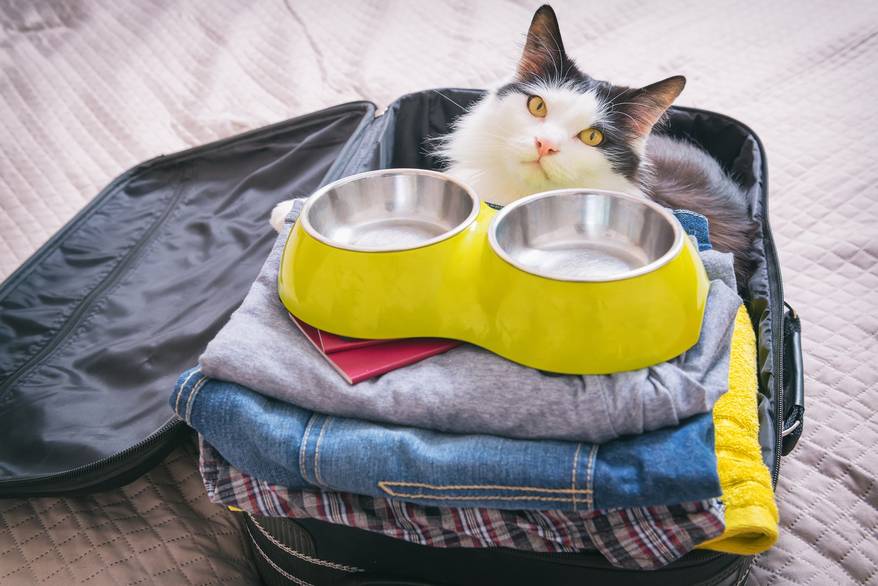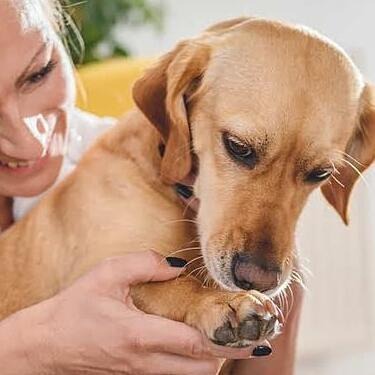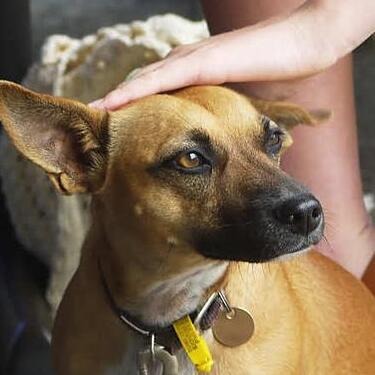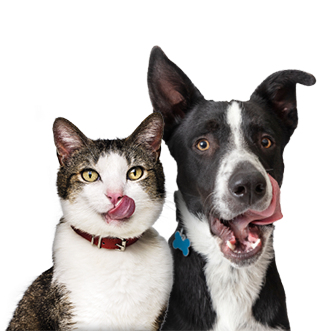
-
Find the right food for your pet
Take this quiz to see which food may be the best for your furry friend.
Find the right food for your pet
Take this quiz to see which food may be the best for your furry friend.
Featured products
 Adult 7+ Perfect Digestion Chicken, Whole Oats & Brown Rice Recipe Dog Food
Adult 7+ Perfect Digestion Chicken, Whole Oats & Brown Rice Recipe Dog FoodScience Diet's breakthrough nutrition supports ultimate digestive well-being & healthy microbiome for dogs age 7+
Shop Now Adult Healthy Cuisine Roasted Chicken, Carrots & Spinach Stew Dog Food
Adult Healthy Cuisine Roasted Chicken, Carrots & Spinach Stew Dog FoodDelicious roasted chicken paired with tender vegetables in a succulent stew
Shop Now Small & Mini Savory Stew with Chicken & Vegetables Dog Food
Small & Mini Savory Stew with Chicken & Vegetables Dog FoodA delicious complement to the nutrition of Science Diet Small & Mini 7+ dog food
Shop NowFeatured products
 Adult 7+ Tender Tuna Dinner Cat Food
Adult 7+ Tender Tuna Dinner Cat FoodWith delicious chunks in a decadent gravy
Shop Now Adult Savory Entrée Can Variety Pack Cat Food
Adult Savory Entrée Can Variety Pack Cat FoodPrecisely balanced nutrition with the delicious taste of savory minced chicken to help fuel the energy needs of cats during the prime of their life
Shop Now Adult 7+ Senior Vitality Chicken & Vegetable Stew Cat Food
Adult 7+ Senior Vitality Chicken & Vegetable Stew Cat FoodImproves Everyday Ability to Get Up & Go
Shop Now -
Dog
- Dog Tips & Articles
-
Health Category
- Weight
- Food & Environmental Sensitivities
- Urinary
- Digestive
- Joint
- Kidney
-
Life Stage
- Puppy Nutrition
- Adult Nutrition
- Senior Nutrition
Cat
- Cat Tips & Articles
-
Health Category
- Weight
- Skin & Food Sensitivities
- Urinary
- Digestive
- Kidney
-
Life Stage
- Kitten Nutrition
- Adult Nutrition
Featured articles
 Does My Pet Hate Me?
Does My Pet Hate Me?Learn tips for bonding with your pet if you've ever thought, 'My dog doesn't like me, or 'Why do I have a standoffish cat?'
Read More Do Dogs and Cats have Belly Buttons?
Do Dogs and Cats have Belly Buttons?Learn whether cats & dogs have belly buttons like humans, what the function is, and if there are any health concerns associated with it.
Read More Why Are Dogs and Cats So Cute?
Why Are Dogs and Cats So Cute?If waggy puppy dog tails and furry kitten yawns make you swoon, you're not alone. Why are cats so cute? And, dogs too! Let's find out!
Read More -


When the unexpected happens — be it a fire, hurricane, flood, blizzard, earthquake, tornado or any other natural disaster — it's important to have an exit plan for you and your family. It is equally important to have a pet disaster plan. Pets left behind in natural disasters can run away or get hurt. Animal disaster preparedness is key in case you have to relocate or evacuate. Taking your pet with you is ideal; however, it may not always be possible. Hill's works diligently every year to help with disaster relief efforts where pets can get displaced, so we unfortunately know that many pets can get separated from their pet parents — having a plan is very important, even when you don't think you'll be a victim of a natural disaster.
Here are the steps you should take to make sure that your cat or dog is well-looked after and safe in case a natural disaster strikes.
Find a Caretaker
When thinking about animal disaster preparedness, the first thing to do is talk to people near and far about their willingness to take your pet in case of a disaster that requires relocating. Think of people that your dog or cat is already familiar with, as well as people whose home environment is similar to yours.
For instance, if your dog is not used to kids, a home full of children may not be the best place. If your cat doesn't get along with other animals, you may need to find an animal-free home. If you can't find another home that is similar to yours or seems to be the "perfect" fit, think about ways to help your pet become accustomed to children or other pets in case those are the only displacement options.
You can also call local shelters to see if they offer foster care for pets during disasters, or research local hotels that let guests bring their pets so that you can include them in your emergency plan.
Caretakers should also be people you would trust to go pick up your pet in the event of a natural disaster if you are unable to get home to take care of them. Make sure these people are comfortable caring for your pet and can make accommodations to care for them quickly if necessary.
Make sure everyone in your family is aware of where your pet should stay in case of displacement. Once you have a confirmed caretaker willing to care for your pet in an emergency, the next step is to create an emergency pet pack.
Build the Perfect Pack
Most home emergency packs have flashlights, batteries, water, canned food, can opener, matches and a first aid kit, but oftentimes, supplies for pets are forgotten. You should make sure your family emergency container has three to seven days' worth of food for the family, including each of the pets. It's important to have current medications for human and furry family members. Finally, having an easy-to-grab evacuation pack by the door is crucial to an effective pet disaster plan, according to the American Society for the Prevention of Cruelty to Animals. This is a pack that can be used in an emergency or given to your designated pet caretaker if you're displaced.
Although pet evac-packs might vary from home to home, there are some staples you should definitely have:
- Pet food — remember food can expire, so make sure to update the back as necessary with new and fresh food
- Water and food bowls
- Plastic bags for waste
- Litter and litter box
- Towels
- Extra collar and leash
- Current medications
- Veterinarian's contact information
Maximize available space in the evac-pack by keeping your pet's information (name, description, your address and phone number) on a USB drive in a plastic bag. It might also be a good idea to give a copy of your pet's medical records (vaccination history, any health issues, etc.) to your emergency caretaker, in case something happens and they need to get help for your pet. Keep another copy with you.
Make sure you have a current tag that has your name and phone number attached to your pet's collar, and place this same information on your emergency collar (which should be located in your evac-pack). These supplies only take minutes to put together.
In a fire, flood, or other disaster, you won't have a few minutes to gather items and leave. You may only have seconds to grab your pet and pack, so have that pack by the door sooner rather than later — you never know when a disaster could strike.


Tasty Tips
Young pets may need several visits in their first year for vaccinations. Adult pets generally benefit from annual check-ups, while senior or special-needs pets might require more frequent visits.
Preparing for Different Types of Disaster

While you may not think that you and your pet will be affected by disaster, the truth is that natural disasters (and unfortunately human-caused disasters) happen in every corner of the globe. Each disaster comes with its own challenges, so it is important to think about the disasters that are most common in your region and be prepared ahead of time to care for your pet in the event your affected.
Bad Weather:
In the case of weather-based natural disasters like hurricanes, tornadoes, wild fires, blizzards, floods and droughts it is important to keep an eye on the weather, especially in the season where each event is more frequent. Keeping an eye on the weather will help you get a better sense that bad weather is on the horizon and you can be more accommodating to care for your pet in the event of disaster striking your home. The worst thing for your pet is getting caught off guard by the weather and not being able to properly care for them. For instance, if you live in a region where tornadoes are prevalent, you might consider keeping your pet in a basement when you can't be home. The same can be said of keeping your pet on upper floors when heavy rain is to be expected.
In cases of extreme heat or cold, you should also plan ahead. People often don't think of droughts as natural disasters, but they can be devastating to regions, so always keep extra bottled water on hand for both your family and your pet. In the case of blizzards or extreme cold, be prepared to keep your pet warm if electricity goes out and you can't maintain the heat in your home.
Earthquakes:
Earthquakes affect families throughout the world, and while science makes it easier to predict when these might happen, they can still happen out of nowhere. If you know you live in an earthquake region you will need to be prepared for more than just the initial effects of the quake. Fires caused from gas lines rupturing are a common occurrence, so you need to be prepared for fires. Also, in regions near large bodies of water, earthquakes can cause flooding to happen. Pets often have natural instincts when danger is around the corner. Find a secure place in the home and train them to go there to feel comfortable. When the quakes start happening, the hope is that they will go to this place where they feel safest.
How to Help Those Not Prepared
Animal disaster preparedness is truly the best way to ensure you and your pet survive a disaster. It's possible that, during a disaster, you might get your family and pet to safety because you planned ahead and made a great pet disaster plan, but not everyone else's pets could be so lucky. If you find yourself or a neighbor in need of pet food or supplies after a natural disaster, there are several organizations that coordinate pet relief efforts.
Keep a few local and national numbers stored in your cellphone in case you need them. Talk to all your neighbors now about animal disaster preparedness and share how to create a pet disaster plan. You and your neighbors should attach pet safety decals on house windows to alert first responders that pets are in the home and may need to be saved. Keep the decals up to date, and if you evacuate with your pet, make note so first responders know if a pet is alone in the home.
You can also help volunteer after the event for those that are in need of assistance. Talk to your local pet shelters about being prepared to help in the case of natural disaster. Shelters are often the first place that displaced pets are brought. They often don't have enough room and food for the additional pets that are brought in. Volunteering is a great way to help your local community after a disaster event. There is nothing better than being able to help reunite a family with their beloved friend after a traumatic event.
Adjusting After a Disaster
Even if you have and follow a pet disaster plan, you may need to help your pet adjust to a new life after a disaster. Some disasters cause homes to need massive repairs and others, unfortunately, leave you in entirely new surroundings. Just like humans need time to adjust to changes, big or small, so do animals. Be patient with your pet and any new behaviors that may surface. Talk with your vet about ways to help your pet feel safe and secure.
Going through a disaster can be stressful and may disrupt your life for several months. Having a plan, an emergency pack, and knowing what local resources are available can be crucial to you and your pet surviving a natural disaster and thriving afterward.


Chrissie Klinger is an educator, writer and mother of two children, three dogs and three cats. Her dog Jake loves sitting on her lap every chance he gets! She enjoys living an active and eco-friendly lifestyle in rural Pennsylvania.
Related products
Related articles

Crystals in your pet's urine can be common, but can also indicate a deeper health concern. Learn about the different types of crystals & what they mean.

Learn the ins and outs of a televet appointment before you talk to a vet online.

Learn about veterinary dental care for your pet, including deep teeth cleaning procedures, which can help your dog or cat maintain proper dental health.

Check out our list of pet-friendly U.S. cities that are excellent travel options, offering off-leash dog parks and pet-friendly restaurants & hotels.

Put your pet on a diet without them knowing
Our low calorie formula helps you control your pet's weight. It's packed with high-quality protein for building lean muscles, and made with purposeful ingredients for a flavorful, nutritious meal. Clinically proven antioxidants, Vitamin C+E, help promote a healthy immune system.
Put your pet on a diet without them knowing
Our low calorie formula helps you control your pet's weight. It's packed with high-quality protein for building lean muscles, and made with purposeful ingredients for a flavorful, nutritious meal. Clinically proven antioxidants, Vitamin C+E, help promote a healthy immune system.

